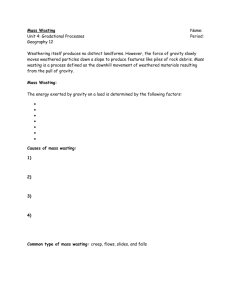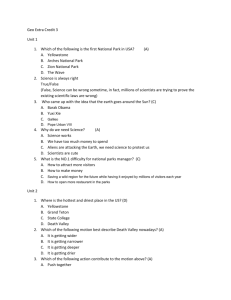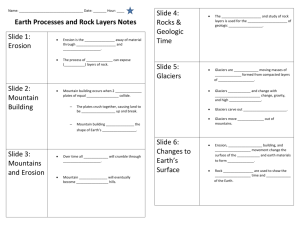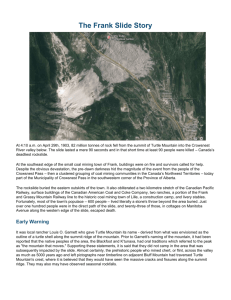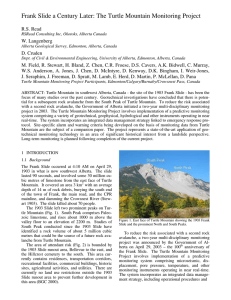CGF3M0 GEOGRAPHY LAB: MASS WASTING THE FRANK
advertisement
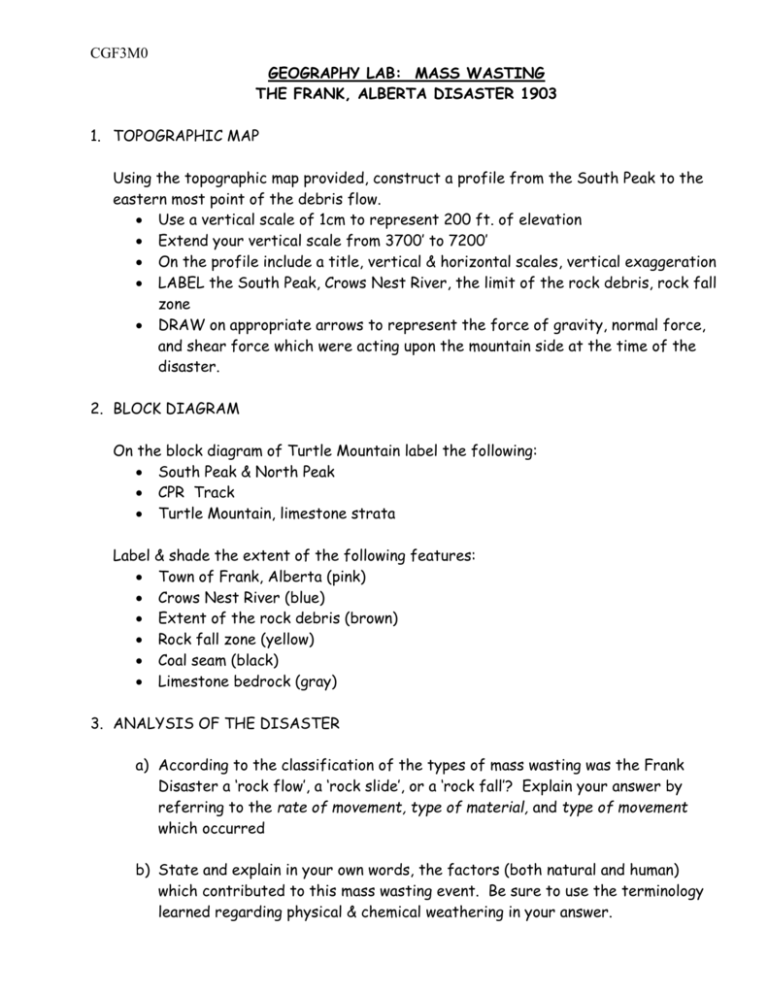
CGF3M0 GEOGRAPHY LAB: MASS WASTING THE FRANK, ALBERTA DISASTER 1903 1. TOPOGRAPHIC MAP Using the topographic map provided, construct a profile from the South Peak to the eastern most point of the debris flow. Use a vertical scale of 1cm to represent 200 ft. of elevation Extend your vertical scale from 3700’ to 7200’ On the profile include a title, vertical & horizontal scales, vertical exaggeration LABEL the South Peak, Crows Nest River, the limit of the rock debris, rock fall zone DRAW on appropriate arrows to represent the force of gravity, normal force, and shear force which were acting upon the mountain side at the time of the disaster. 2. BLOCK DIAGRAM On the block diagram of Turtle Mountain label the following: South Peak & North Peak CPR Track Turtle Mountain, limestone strata Label & shade the extent of the following features: Town of Frank, Alberta (pink) Crows Nest River (blue) Extent of the rock debris (brown) Rock fall zone (yellow) Coal seam (black) Limestone bedrock (gray) 3. ANALYSIS OF THE DISASTER a) According to the classification of the types of mass wasting was the Frank Disaster a ‘rock flow’, a ‘rock slide’, or a ‘rock fall’? Explain your answer by referring to the rate of movement, type of material, and type of movement which occurred b) State and explain in your own words, the factors (both natural and human) which contributed to this mass wasting event. Be sure to use the terminology learned regarding physical & chemical weathering in your answer. CGF3M0 Use the following website to answer questions c & d. http://www.ags.gov.ab.ca/geohazards/turtle_mountain/sensor_network.html c) State the five types of sensors used to monitor Turtle Mountain by the Alberta Geological Society. d) Briefly explain, in your own words, the purpose of each sensor. RESOURCES: Handout “The Frank Slide: The Mountain That Walked” Text & notes on weathering & mass wasting Class Website – links to videos watched in class and Turtle Mountain Monitoring System (see Physical Geography Links – bottom of page)

